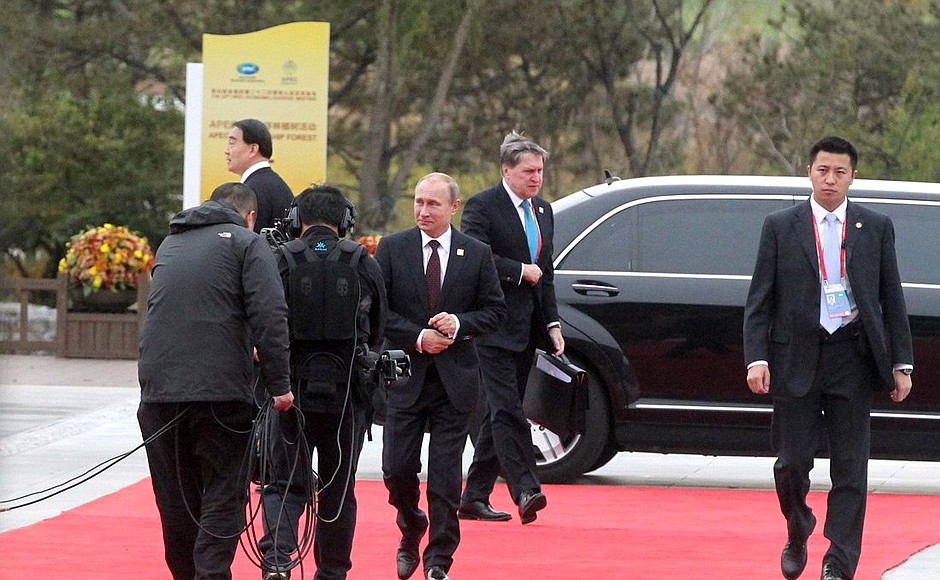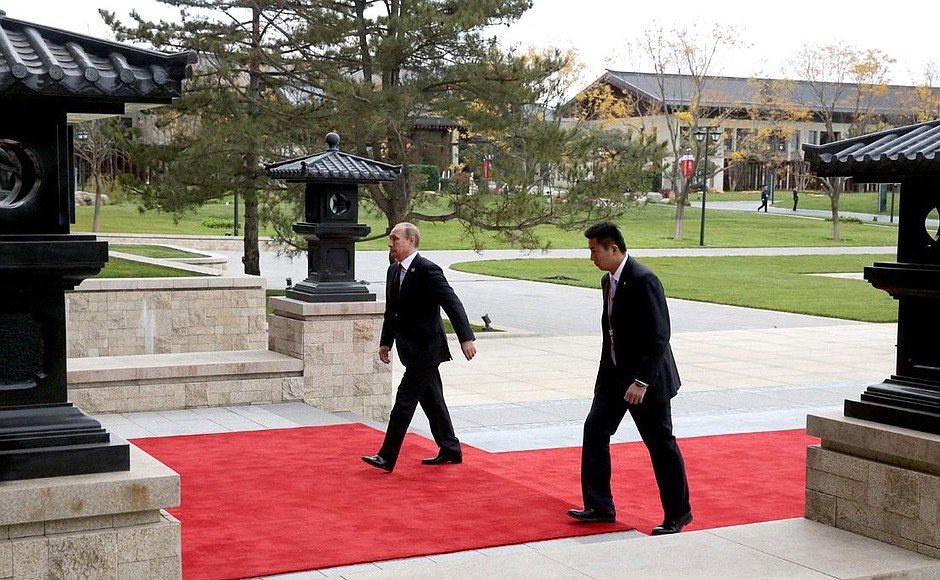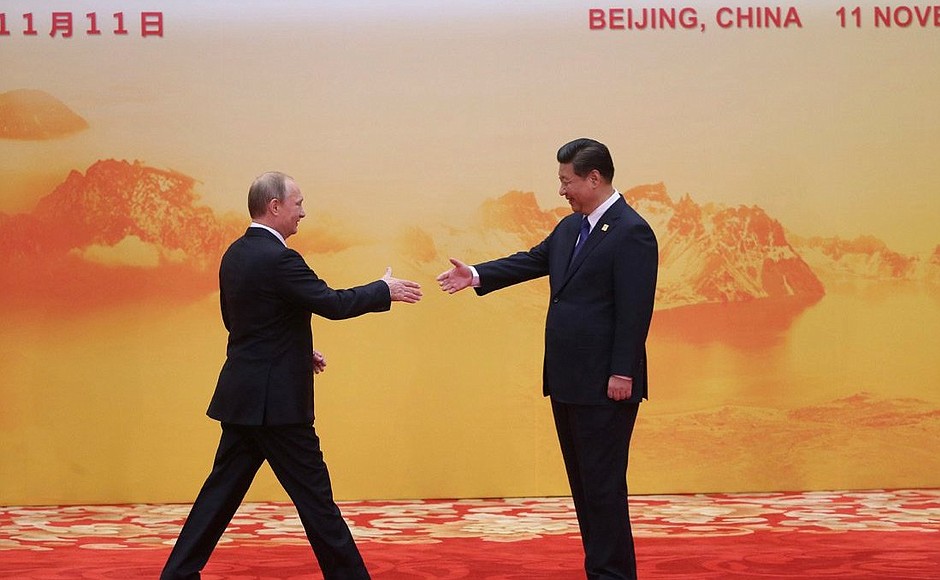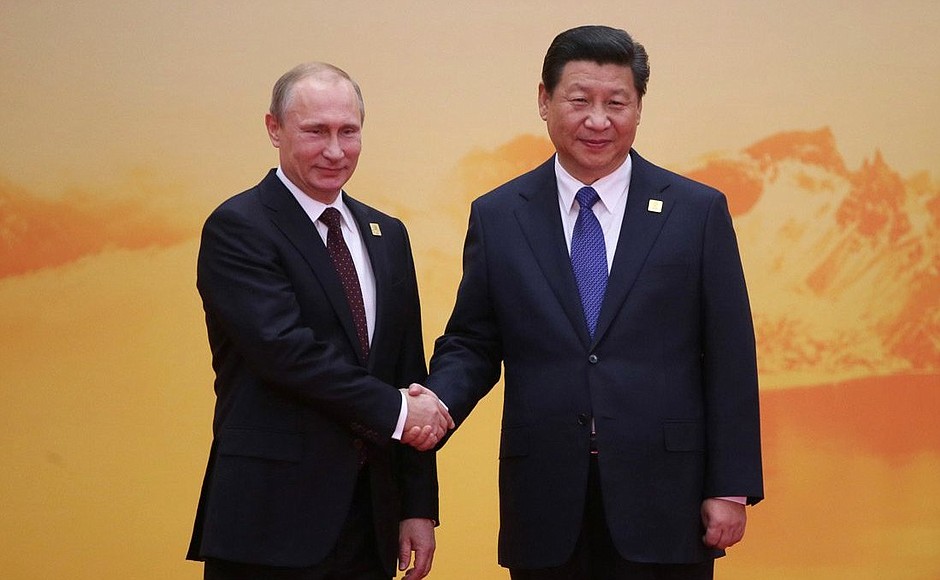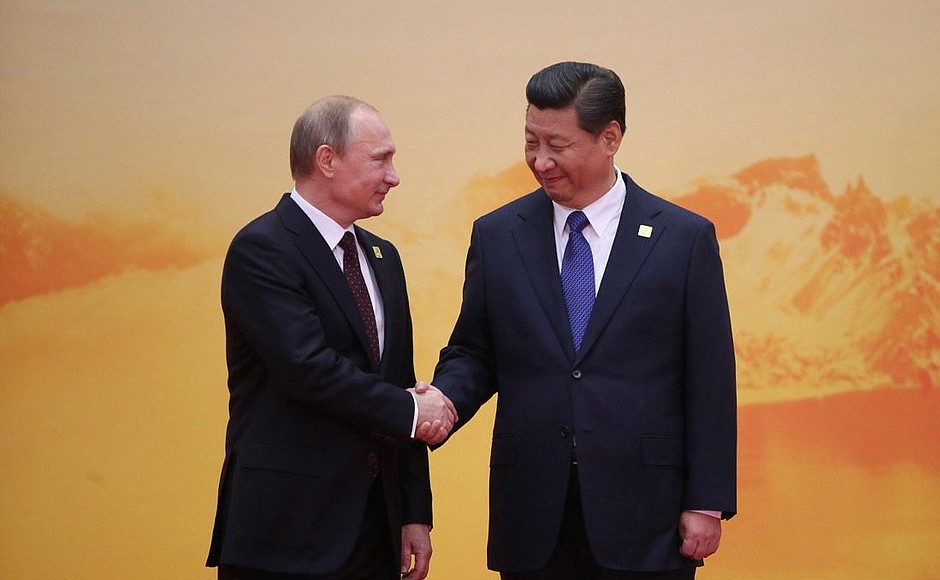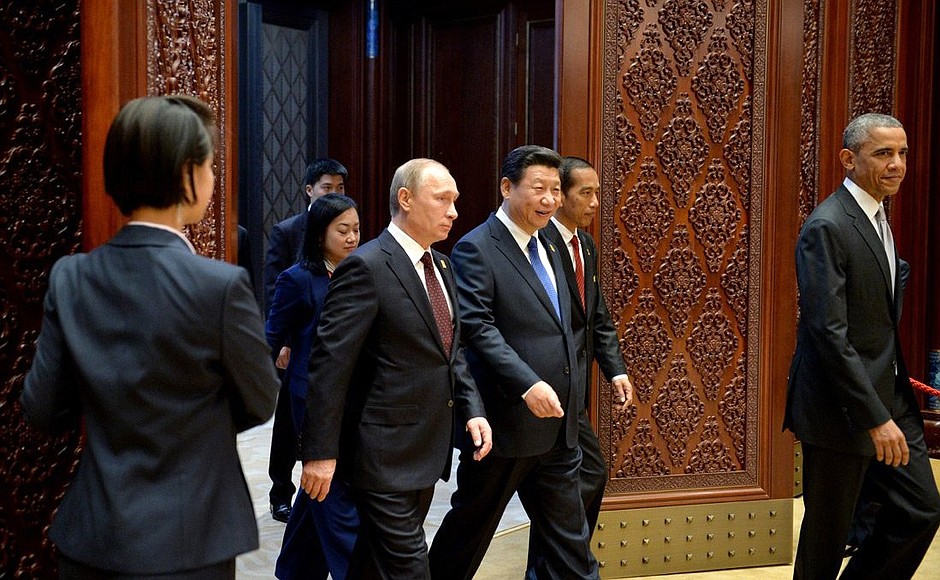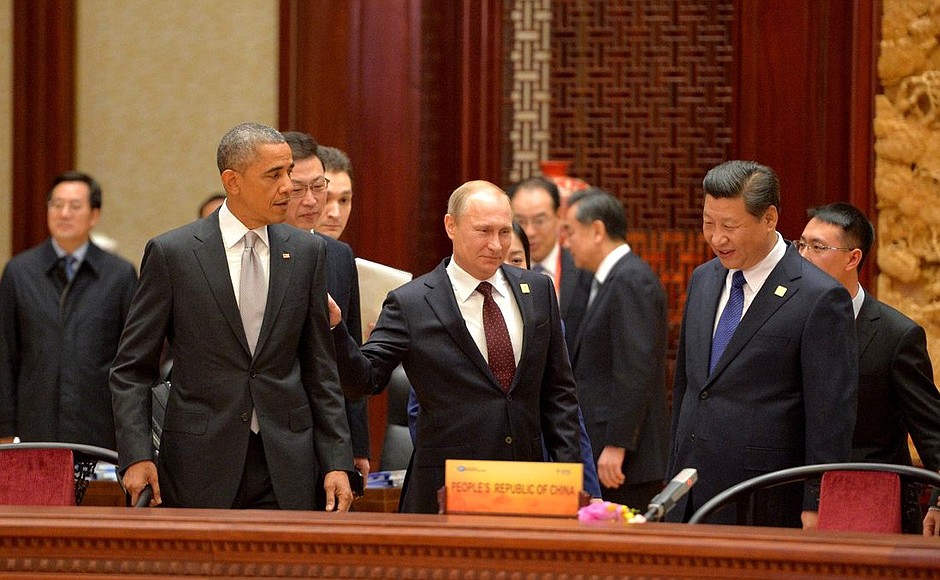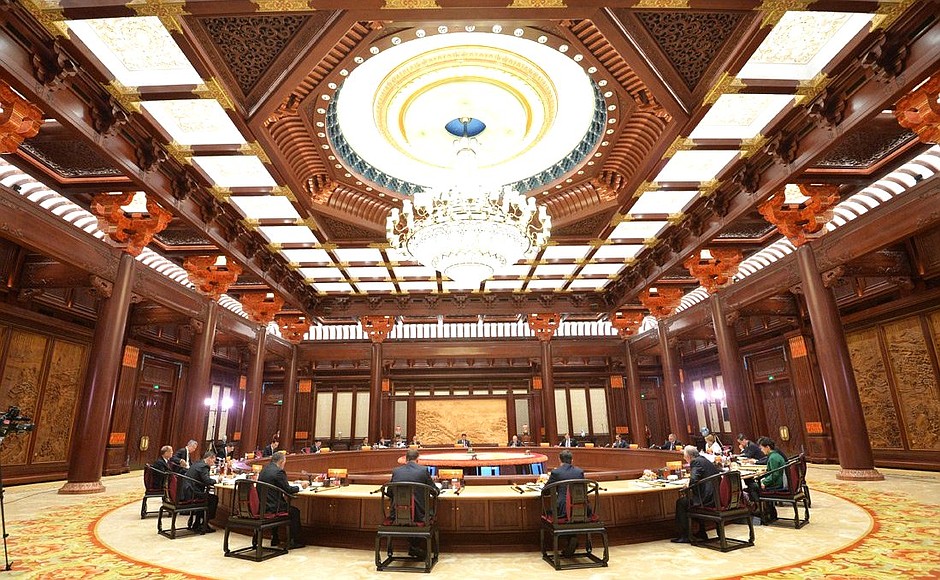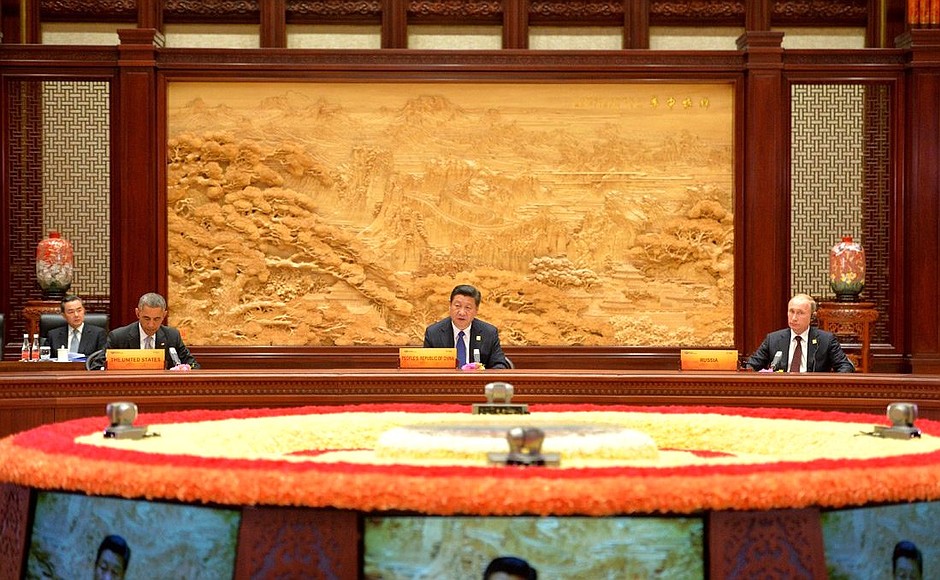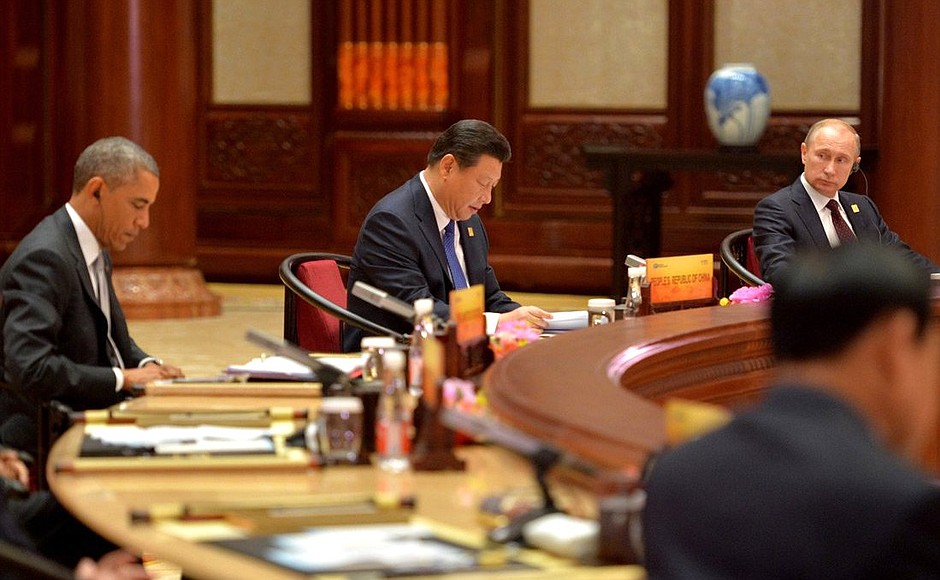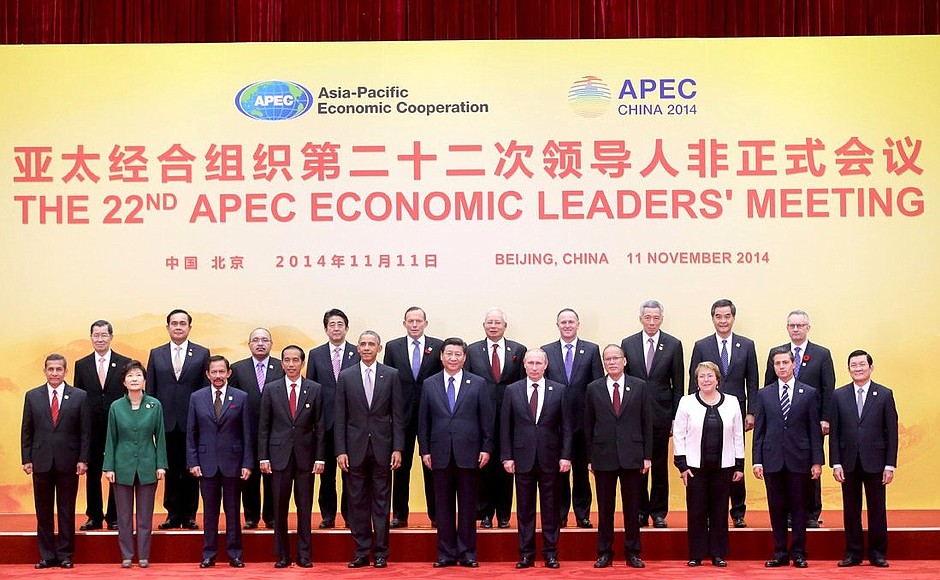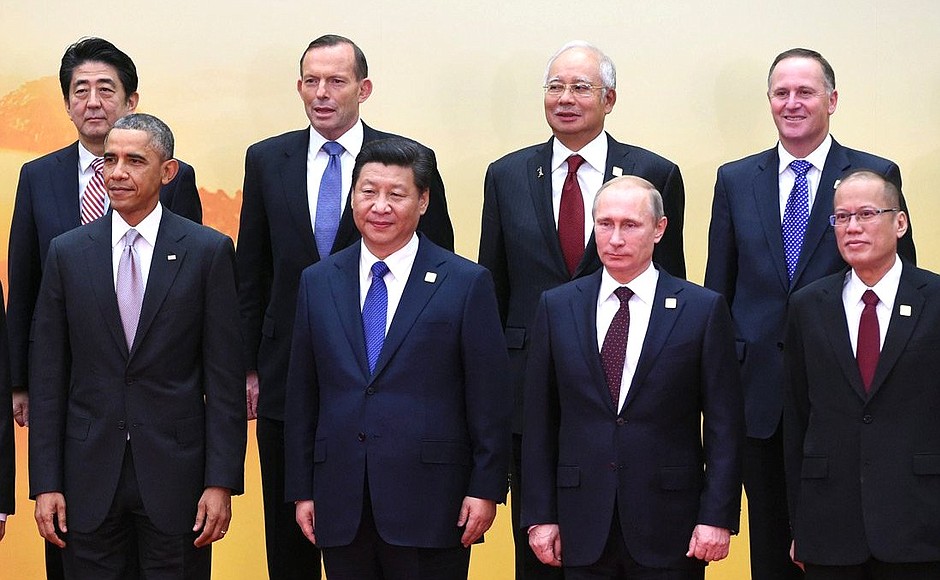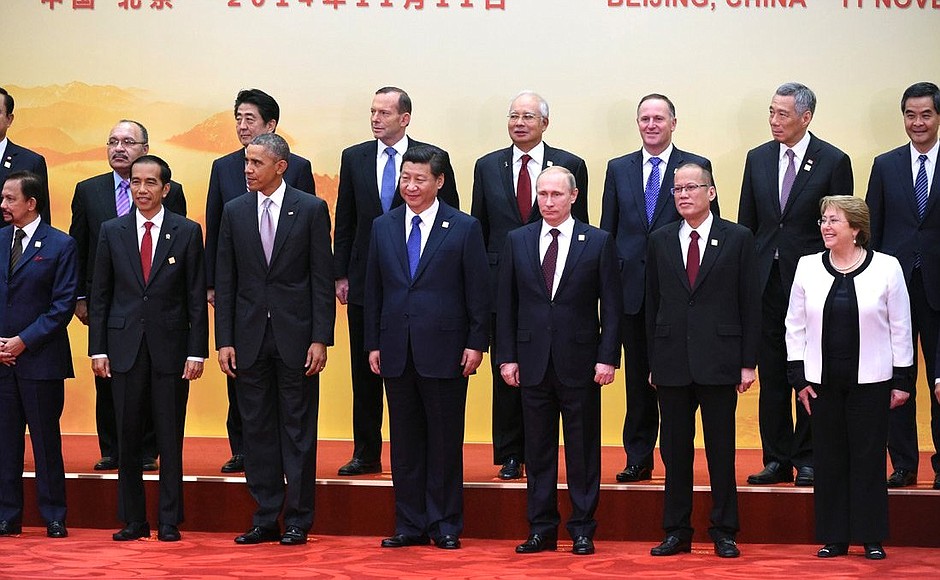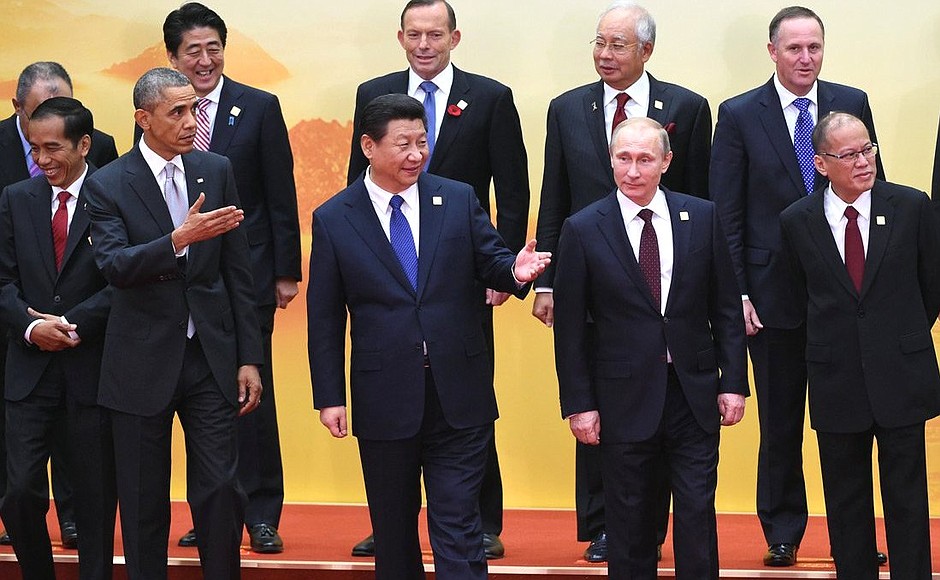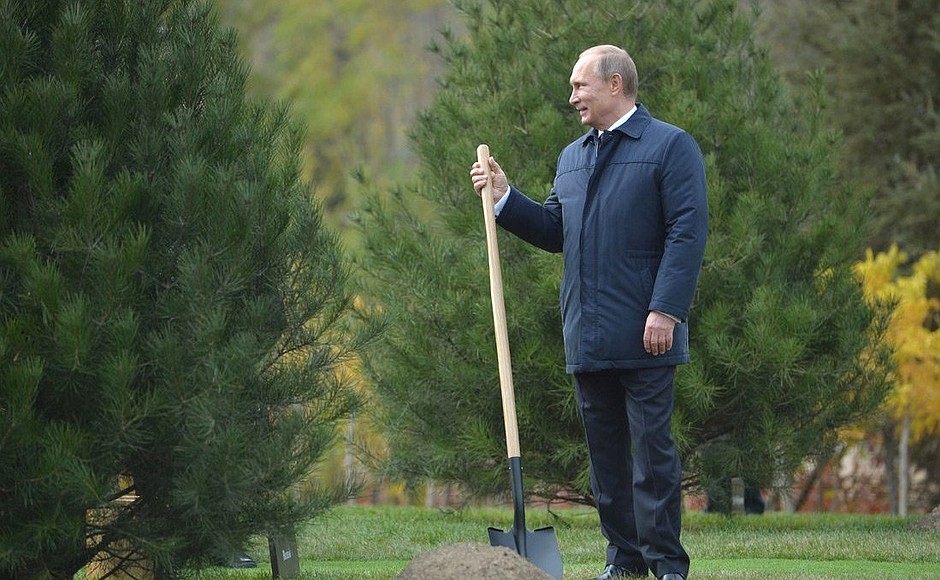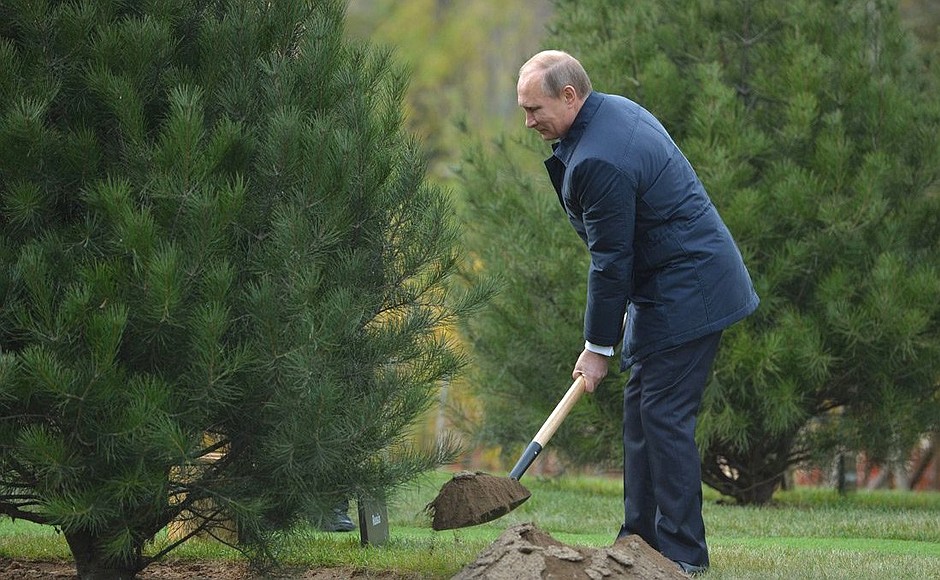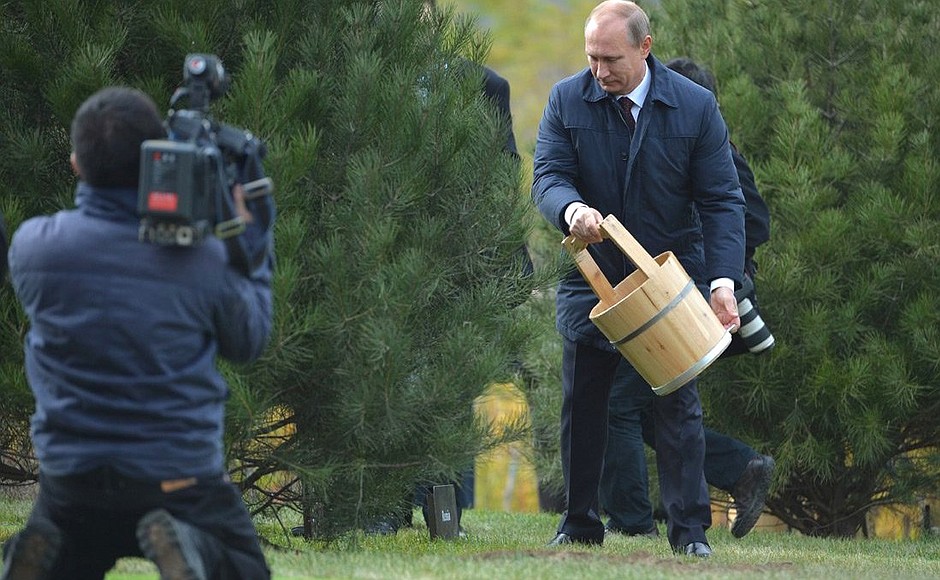After their first meeting, the Summit participants had a joint photo session and took part in the ground-breaking ceremony for the Honoured Guest Aisle. According to the organisers, the new pine-lined aisle is to serve as a reminder of the APEC Summit held in Beijing in the year of the organisation’s 25th anniversary.
During a working lunch, the forum participants discussed the overall strengthening of regional partnership and improving the infrastructure.
The second meeting, held later, considered ways to promote innovation progress, structural reforms and the growth of the region’s economy.
After two days of discussions, the heads of state and government of the APEC member countries adopted the Beijing Declaration with four annexes and a separate Statement on the occasion of APEC’s 25th anniversary.
* * *
Address at APEC Economic Leaders’ Meeting
President of Russia Vladimir Putin: Good afternoon, ladies and gentlemen.
In the past years, the expansion of trade relations within the Asia-Pacific Region has been accompanied by a significant growth of our countries’ economies. Today APEC accounts for 37 percent of world trade, and the living standards have improved noticeably. This is also a fact, an objective reality. In many ways, this is a result of growing integration in the area.
Last year APEC reached a qualitative milestone: for the first time trade within the union exceeded export-import operations with countries outside the region. To retain such positive dynamics we need to continue expanding trade and investment cooperation between our countries, more actively do away with the excessive administrative barriers we keep speaking of and improve access to markets.
”I want to commend the Beijing roadmap prepared by China during its Presidency to promote the creation of an Asia-Pacific free trade zone. The measures it envisages will help harmonise the integration initiatives implemented within the APEC space.“
In this context, I want to commend the Beijing roadmap prepared by China during its Presidency to promote the creation of an Asia-Pacific free trade zone. The measures it envisages will help harmonise the integration initiatives implemented within the APEC space. This is of special significance considering the large number of trade agreements in effect within the region that differ both in the degree of liberalisation and in the number of participants.
This creates the potential danger of the region splitting into individual competing associations. Yet the exact opposite is needed: we must act on the basis of transparency and openness, as our colleagues here have already said, and with due account of the interests and capabilities of all parties. We also proceed from the notion that no agreement should damage multilateral trade within the WTO system.
During Russia’s APEC Presidency in 2012, we put forth a model chapter on transparency for the future free trade agreement. All our partners approved this initiative and now it is important to ensure its broadest possible application.
I would also like to note and remind you that the Eurasian Economic Union, which Russia is creating together with Kazakhstan, Belarus and Armenia, a new member, is based on those very principles of openness and transparency and in full compliance with WTO norms. As a result, a common market will start functioning on the territories of our countries as of January 1, 2015. The Asia-Pacific region accounts for a large scope of this trade: in 2013, its share in our trade turnover exceeded 26 percent.
We are currently conducting negotiations on a free trade zone with Vietnam, and we are open to dialogue with other partners, including the existing integration associations and the ones being established. I am certain that the conjunction of integration processes in the Asia-Pacific Region and in Eurasia would enhance overall stable growth for the benefit of our nations.
Thank you for your attention.
